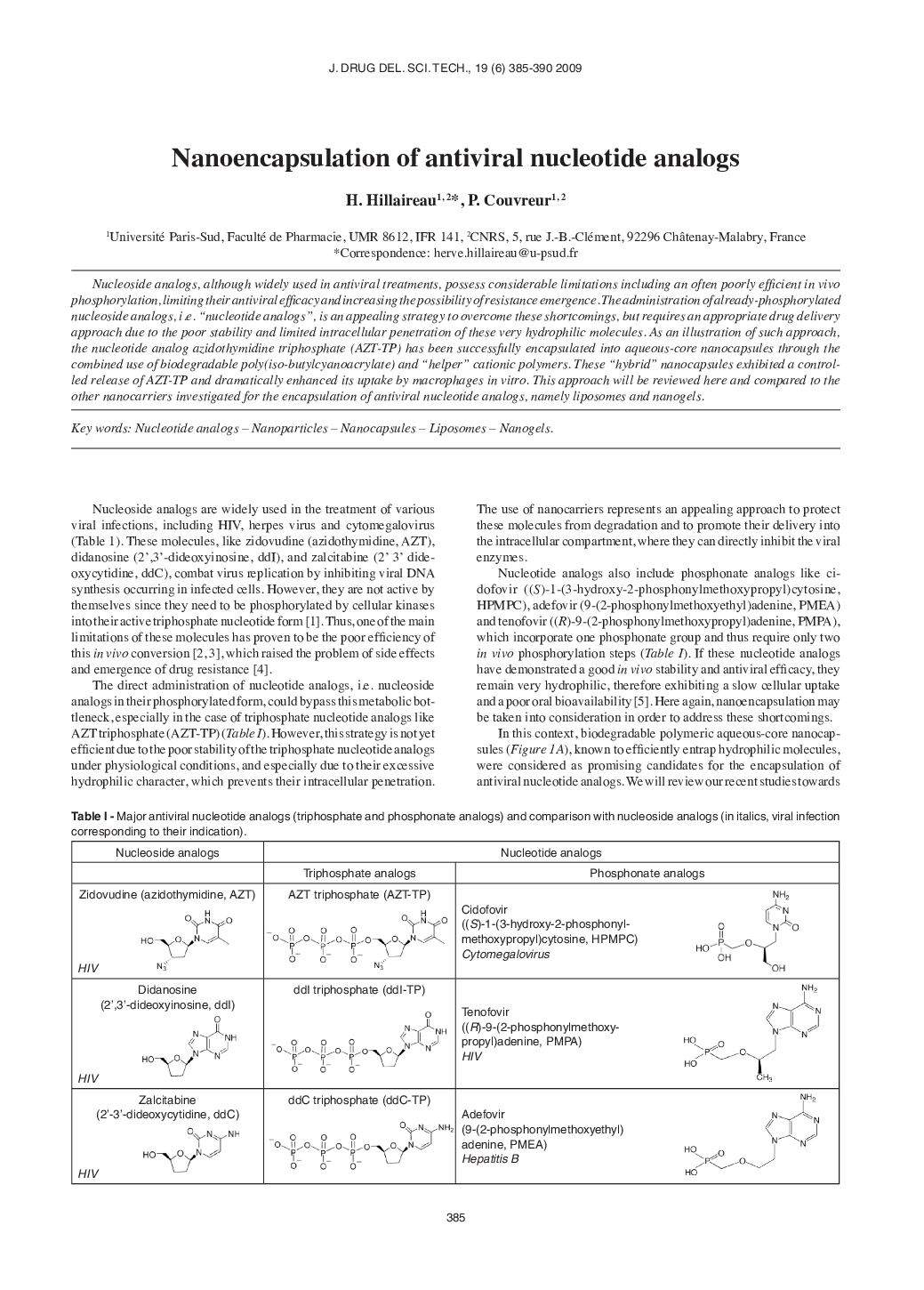| Article ID | Journal | Published Year | Pages | File Type |
|---|---|---|---|---|
| 2483726 | Journal of Drug Delivery Science and Technology | 2009 | 6 Pages |
Nucleoside analogs, although widely used in antiviral treatments, possess considerable limitations including an often poorly efficient in vivo phosphorylation, limiting their antiviral efficacy and increasing the possibility of resistance emergence. The administration of already-phosphorylated nucleoside analogs, i.e. "nucleotide analogs", is an appealing strategy to overcome these shortcomings, but requires an appropriate drug delivery approach due to the poor stability and limited intracellular penetration of these very hydrophilic molecules. As an illustration of such approach, the nucleotide analog azidothymidine triphosphate (AZT-TP) has been successfully encapsulated into aqueous-core nanocapsules through the combined use of biodegradable poly(iso-butylcyanoacrylate) and "helper" cationic polymers. These "hybrid" nanocapsules exhibited a controlled release of AZT-TP and dramatically enhanced its uptake by macrophages in vitro. This approach will be reviewed here and compared to the other nanocarriers investigated for the encapsulation of antiviral nucleotide analogs, namely liposomes and nanogels.
